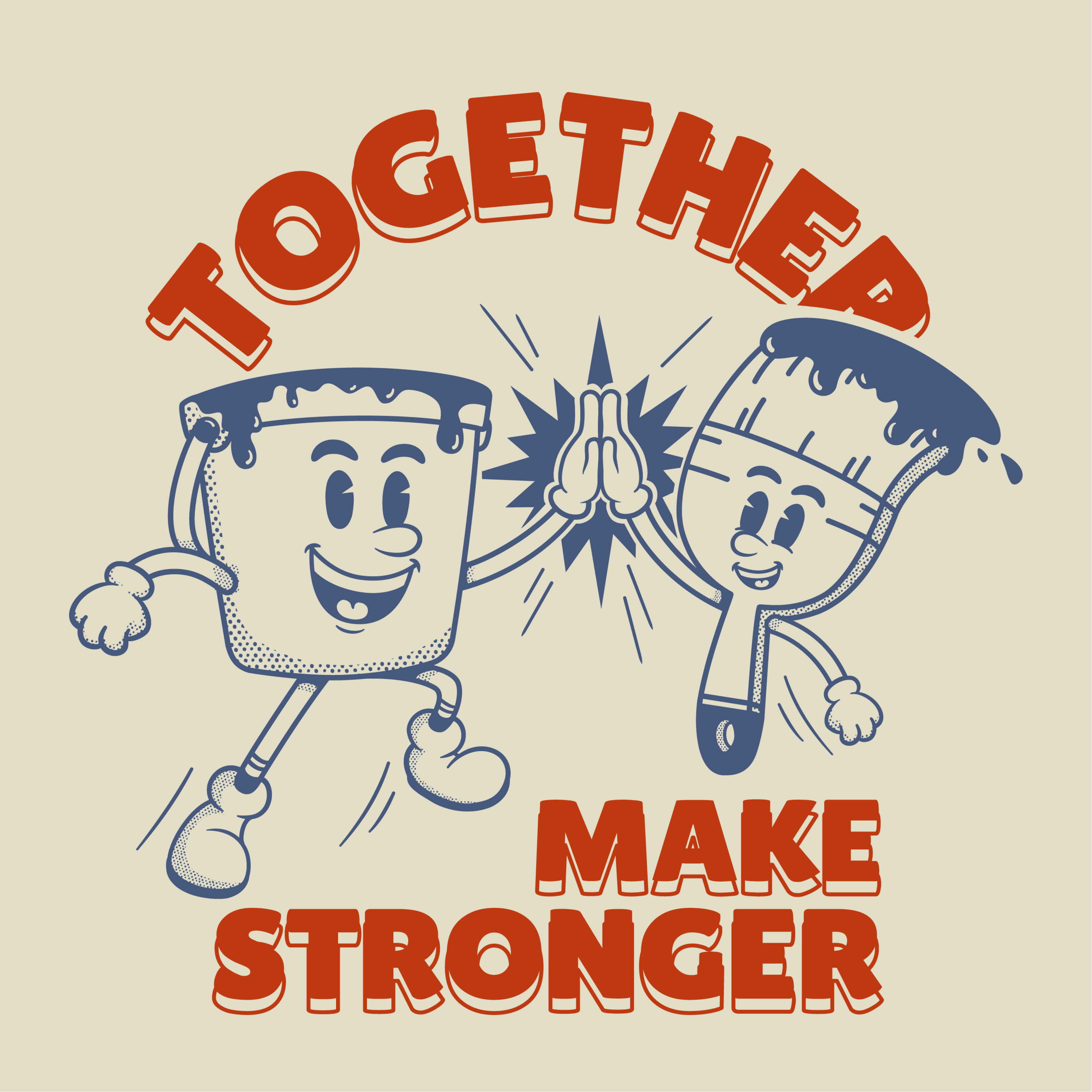
A well-made video can convey your message—whether that’s “support my cause!”, “buy my stuff!”, or “see this cool thing we did!”—more effectively than any other medium. A poorly-made one can not only fail to do those things, but also cost a bundle in the process. Compared to a blog post or an Instagram campaign, making a video is a high-risk/high-reward proposition.
So it’s understandable why many nonprofits and small businesses are wary about getting into the moving-picture game. If your animal rescue center or real estate agency has a tight budget, investing a big chunk of it into a single piece of content can feel nervewracking. And while you can’t shake a tree without a dozen freelance copywriters and graphic designers tumbling out, finding someone skilled at managing the video production process is much trickier.
Unless you happen to be reading this newsletter!
Before co-founding PSE, Annmarie Pisano spent more than a decade in the video business. She’s managed the production of hundreds of videos, ranging from feature-length documentaries to 30-second TV commercials. Her past clients include organizations like Mercedes-Benz USA and NYC’s Department of Health. Annmarie has wrangled casting, equipment logistics, festival submissions, travel plans, and just about every other conceivable element of video production.
Today, we’re asking her to demystify the process:
To get started with a video project, what are the essential ingredients?
Motivation and message. I used to work for a director who would say these two words all the time, like an incantation, when prepping for a shoot. These are the first two pieces you need to have in place: why do you need a video? Is there a problem that you hope it will solve, or a question you need it to answer? And what is the message you want to convey?
From there, you’ll work with a producer or director to put together the overall concept. Is it a high-flying superhero moment that takes place on the Brooklyn Bridge? Or is it a simple documentary, starring your staff, filmed in your office? There’s a lot of daylight between those two ideas, and pretty much everything that happens after—budgeting, scheduling, hiring a crew, producing the shoot, editing, and post-production—all stems from this concept.
As a client, you should expect to be consulted on each step along the way, making decisions alongside the experts that you’ve brought in to bring this idea to life.
What are realistic timelines for the most typical video types?
Longer than you think!
For a simple 5-minute project, I would allow a timeline of 3 months, though it can absolutely go slower if roadblocks emerge. Most of this is down time for the client, but it takes a while to plan a schedule, line up the subjects and freelance crew, get everyone into the right place (especially if there’s a remote team involved), and then edit interviews into something that shows off your messaging, and an overall package that sparkles.
Most production teams plan for 2-3 rounds of client revisions to an edited piece, but for high-profile or high-budget projects, this can really spin out into a longer editing process if there’s no set deadline.
How about minimum viable budgets?
For something on the more simple end—documentary style, less than 5 minutes—$15,000 is appropriate for a small business or nonprofit. However, any more exciting ideas like bespoke locations, a fancy director, sets, food, travel, animation or CGI, can really explode the budget. Occasionally, an unexpected charge comes up that no one foresaw (one example: your office building, where you planned to shoot cheaply, turns out to have an incredibly high insurance minimum to bring a camera onto the elevator and you are on the 40th floor).
It’s the producer’s job to plan for all of this! But overall, the adage that nothing in life comes free is really reflected in the end product, moreso than in other media. Cutting costs on production or editing typically comes out in the final product, or requires even more money to fix at the end.
Where should you splurge—and skimp—when making a video?
I do think there are some places you can save! In film school, instructors tell students to think about free resources they already have and use those in their scripts. If your small business manufactures skateboards, for example, congratulations, your video is going to feature a LOT of skateboards.
For a documentary, I encourage CEOs to really look at their company and their staff and see who, or what, shines the most, then use them. If you have a brilliant, hilarious, charming employee in the mail room, get them on camera (if they want!). A lot of amazing b-roll images from your work around the world? A gorgeous set of graphics from your website redesign? Someone with a lot of free time? Money is saved by using the things and people you’re already paying for, within reason.
Where to spend, though, is on sound, lighting, and editing time. Typically it’s very hard to fix sound and camera problems after the shoot is over and everyone’s gone home. Saving $500 there may seem like a win in the moment, but it can lead to a lot of wasted time and/or money in trying to fix whatever happened as a result.
If you’re doing interviews, I also strongly recommend bringing in a great make-up artist who is used to working with real people. A talented MUA is worth their weight in gold for making people feel great on camera, and when you’re working with people who aren’t professionals, cutting through the nerves is half the battle. Anyone who can help with that is worth the budget line.
Any tips for solving common snags?
If you have a clear plan going in, and everyone is fully agreed on the budget, timeline, and basic details, you should be okay.
The most common snags come when people haven’t been totally honest with themselves or their team. They’re not really sure about producing the concept for the budget, they’re nervous that the location doesn’t work and haven’t brought up those concerns to anyone else, or they go in knowing there’s a huge, looming problem and plan to just sort it out in the moment somehow. Shoot days are inherently stressful and a little messy at the best of times, so having a potential issue weighing that you haven’t brought up is a disaster waiting to happen—one that often could have been solved by some advance planning.
Then, keep it simple! It’s hard to know when someone is going overboard (sometimes you really do need that $400 key light to make the location work), but for a simple shoot and video, you probably don’t need pyrotechnics or a Steadicam. If it seems like too much, it’s worth having a conversation about, at least.
Because the last word is rarely the end of the conversation.
Much like penguins, we enjoy bringing you little gifts to show we care:
Cool remote job alert: One Fair Wage, an organization focused on ending subminimum wages across the US, is hiring a media relations & communications director at a starting salary of $110k-$125k.
If you miss the golden era of feminist blogs, you might enjoy supporting the Kickstarter campaign for The Flytrap by Andrea Grimes—with a tagline like “Fuck the Algorithm,” you know it’ll be good!
RIP Quincy Jones, one of the greatest communicators of our age and a legend who “delighted in the creativity of others.”

If the 2010s were an era of diversity in media, the 2020s are one of consolidation. This presents obvious challenges when trying to get small or medium organizations mentioned in the news. Success depends on riding the waves that already exist, instead of trying to make new ones.
Press releases sometimes feel like relics from a simpler, more innocent time. Much like fax machines, most people are aware they continue to exist. What’s less clear: who actually uses these things in 2025? And for what purpose?

The ability to not sound like you were just lobotomized by a team of nonprofit execs with MBAs has become a way to stand out. It's “riskier” in a sense, because it’s easier for people to tell what you’re actually saying—and potentially criticize it. On the other hand, nobody’s listening to the jargon jockeys anymore.

When we founded this agency last year, we had a pretty straightforward idea of how we’d run our business: do good work with our own hands, communicate honestly, and treat people fairly. We thought this would be the simplest path to earn a decent living and contribute something to human society. After a year of this experiment, here’s what we’ve found...

Working with people you think are interesting is good for your own personal and career growth. If their ideas are good enough to work on for free, someone will eventually pay them for that, and you’ll have forged a professional relationship—or better, a friendship—with someone smart.

There’s nothing wrong with media outlets exploring new revenue streams, and newsrooms are always fluctuating in size. But outlets can only hollow out their core product so much before it collapses entirely, and a growing number of media organizations seem to be reaching that point now. Live events are not going to save them.
Comms agencies that are good at their work tend to be curious and resourceful. We can’t pretend to be ignorant about the people and products we’re telling the public to trust. In all but the rarest cases, the agency knows what it wants to know. Business is never as pure or idealistic as we might want it to be. It does have ethical boundaries, though, and these are especially important at inflection points like the one we’re in now.
We humans like to explore for exploring’s sake. We’re pleased when we find an unexpected beautiful thing, and we feel a sense of satisfaction when we “discover” something that’s not immediately obvious to the casual observer. People want to spend time in environments where these opportunities are available—which is something to consider when building (or updating) your website.
Nonprofits shouldn't have to beg for funding to provide vital services. But with federal funding suddenly scarce—and thousands of organizations scrambling to attract attention from the big donors that remain—a new kind of comms strategy is needed.

The platform doesn't drive traffic to your site. The ads don't convert. And these days most of the "engagement" comes from spam bots or virulent bigots. It's time to move on from Twitter—but to where?
Everybody loves talking about the importance of "storytelling" for building your organization's name recognition. And it really can work—but it requires more planning and effort than firing off the occasional blog post or Instagram post.

If your nonprofit or small business has a clear message to share about a concrete goal it wants to achieve, video can do that better than any other medium—if it's done right.

Today, even a glowing review in the New York Times doesn't move the needle that much. Getting people's attention takes a more creative approach. And it all hinges around owning the means of (content) production.

In the inaugural issue of A Better Way to Say That, we explore important questions like why does this newsletter exist? and why does PSE exist, for that matter? We also share a roundup of exciting new book launches, events, and job postings—along with perhaps the most effective fundraising email ever written. As far as business-y newsletters go, it's a fun read!


